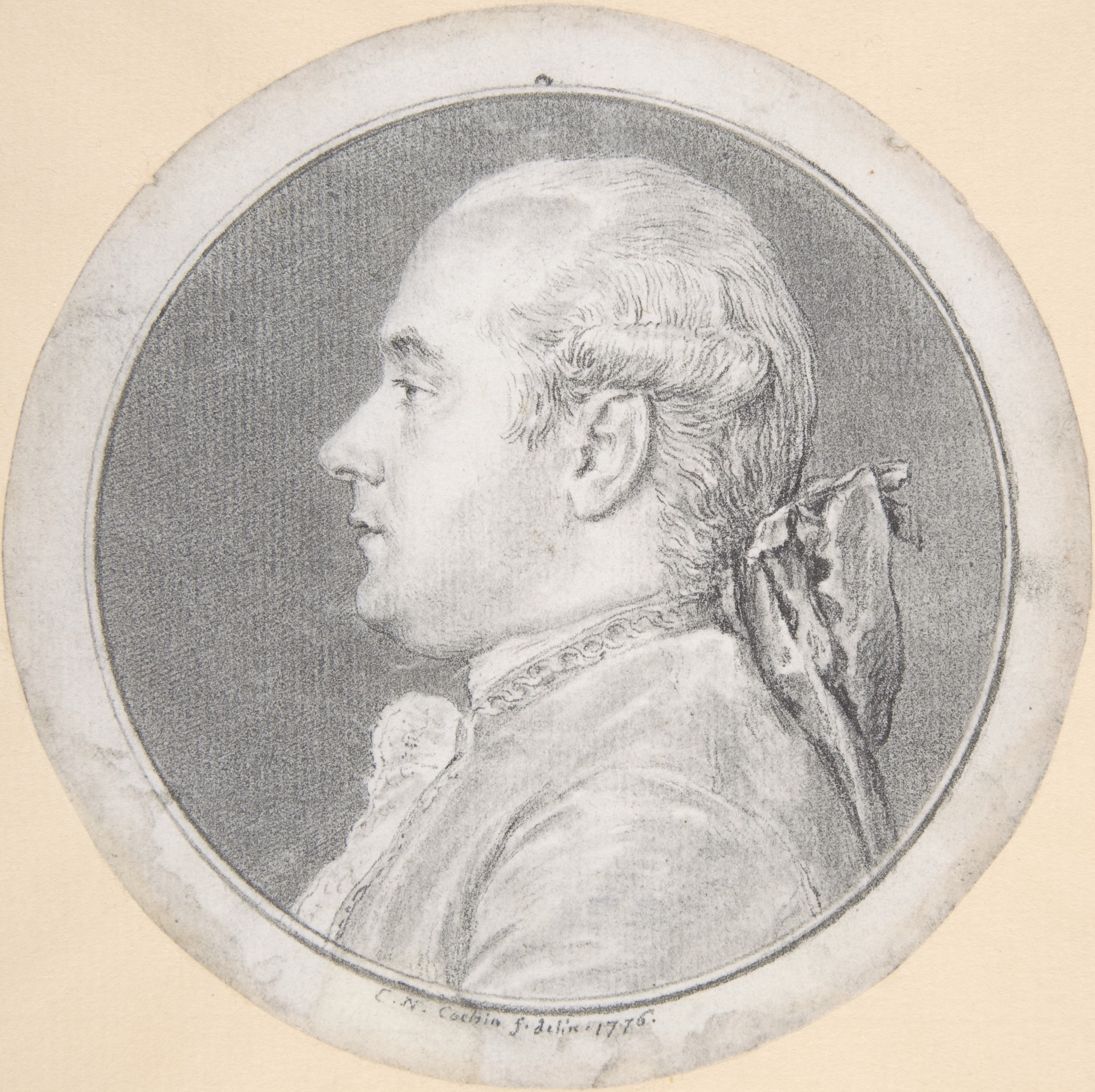CHARLES-NICOLAS COCHIN (Paris 1715 – 1790 Paris)
Charles-Nicolas Cochin (Paris 1715 – 1790 Paris)
Portrait of the Harpsichord Maker Joseph Treyer
Signed and dated ‘C.N. Cochin f. delin. 1782’
Graphite, brown ink framing lines, diameter 75 mm (2.95 inch); presented in a gilt circular frame of Neoclassical form and with a washed mount
Provenance
Private collection, Paris
Engraved
In reverse, by Simon-Charles Miger (1736–1828), engraving and etching, 105 x 99 mm, 1782; an impression is preserved in the collections of the Rijksprentenkabinet, Rijksmuseum, Amsterdam, inv. no. BI-1958-0262-35-4; Emile Bellier de la Chavignerie, Biographie et catalogue de l'oeuvre du graveur Miger, Paris 1856, p. 137, cat.no. 285
***
Charles-Nicolas Cochin is considered one of the leading tastemakers of mid-eighteenth-century France. He was initially trained by his father, the engraver Charles-Nicolas Cochin senior (1688–1754), and his mother, Louise-Magdeleine Horthemels (1686–1767), who herself was a leading engraver in Paris for some fifty years.1 He was further educated by Jean II Restout.
Cochin produced his earliest engraving at the tender age of twelve, and from 1737 was employed by the young King Louis XV to execute engravings commemorating births, marriages and funerals held at court. In 1749 Cochin was selected by Mme de Pompadour to accompany her brother Abel Poisson, future Marquis de Marigny, on a Grand Tour to Italy. In 1752 he was furthermore appointed as keeper of the King’s drawings, and given an apartment in the Louvre. A few years later he was appointed ‘administrator of the arts’ to the King, and in this role commissioned works from other artists for Royal residences. Cochin was critical of the Rococo style and was an early advocate of Neoclassicism, achieved through technical precision.
As an independent draftsman, Cochin is mostly known for his delicate and precise portrait drawings, frequently en profil, as in the present case. This well observed portrait, drawn in 1782, depicts the harpsichord maker Joseph Treyer (d.1788).2 Born in Switzerland, Treyer came to Paris to be apprenticed to his uncle, the harpsichord maker Jean Keiser, known as L’Empereur. Treyer died a widower without issue in 1788, and the inventory of the worldly possessions in his house in the Rue des Rats (now Rue d’Arras) lists many harpsichords and other instruments, both finished and unfinished.3
This beautifully preserved drawing is a wonderful example of Cochin’s draftsmanship, but also rare in depicting a craftsman, rather than a member of the elite – and even more interesting that the drawing was engraved by Simon-Charles Miger (1736–1828) in the same year, 1782, indicating that Treyer was something of a celebrity. Our drawing can for instance be compared to Cochin’s Portrait of an Unknown Man in the Metropolitan Museum, New York (fig.).4
1. For Cochin, see Christian Michel, Charles-Nicolas Cochin et le livre illustré au XVIIIe siècle: avec un catalogue raisonné des livres illustrés par Cochin, Geneva 1987 and Christian Michel, Le voyage d’Italie de Charles-Nicolas Cochin (1758): édité en fac-simile avec une introduction et des notes, Rome 1991.
2. For Treyer, see Pierre J. Hardouin, ‘Harpsichord making in Paris: eighteenth century’, The Galpin Society Journal, vol. 12, May 1959, pp. 73-85.
3. Hardouin, op. cit., pp. 73-77.
4. Signed and dated 1776 in his usual form, also seen in our drawing; graphite, diam. 115 mm, inv. no. 1970.41.2; Jacob Bean and Lawrence Turčić, 15th-18th Century French Drawings in The Metropolitan Museum of Art, New York, 1986, cat. no. 72, p. 71, ill.



